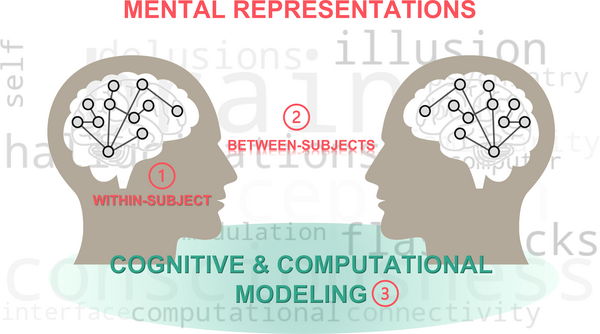Research programs

Research methodology
The Lille Psychiatry, Subjectivity & Inference research program on mental representations follows three complementary paths:
(i) at the behavioural /clinical level: we develop methods to explore the emergence of a mental representation into consciousness, spanning from normal to pathology. Our particular emphasis lies on investigating phenomena such as hallucinations, post-traumatic flashbacks, multistable perception in context of ambiguity, self-other distinction and body-awareness ;
(ii) at the network-level: we develop computational models grounded in probabilistic inference and graph-theory. These models aim to elucidate how the previously described percepts and beliefs may arise from information flow in complex networks, including brain structural or functional connectomes. This framework extends beyond the individual, from radicalisation in social networks to the adherence to conspiracy theories ;
(iii) at the neurocircuit level: we examine excitatory-inhibitory imbalance as a fundamental mechanism that may underlie aberrant percepts and beliefs. This imbalance can be targeted in a precision medicine perspective. Non-invasive brain stimulation techniques or neurofeedback can induce focal or multifocal changes in neural excitability patterns, tailored to alleviate highly disabling psychiatric symptoms.

